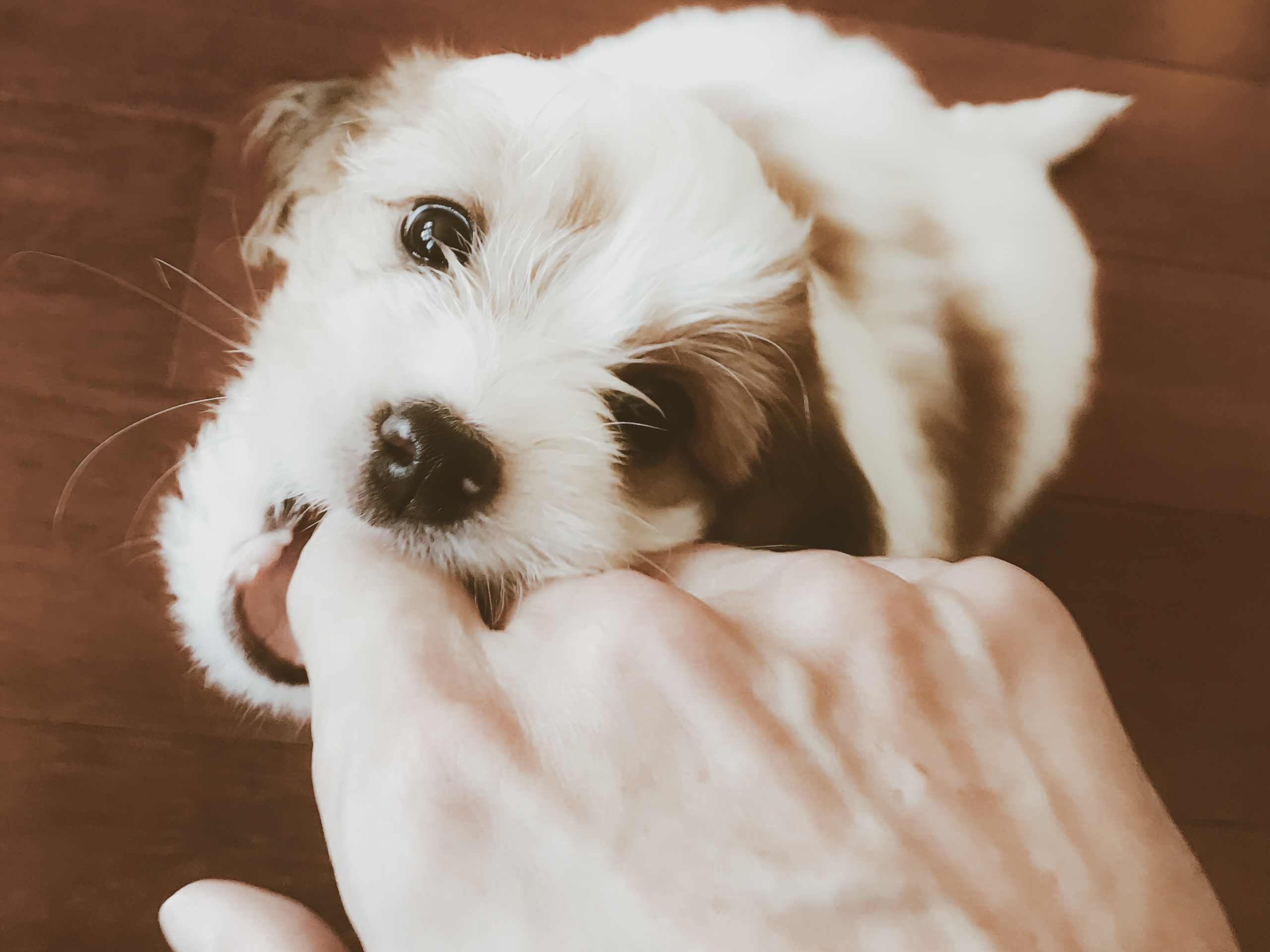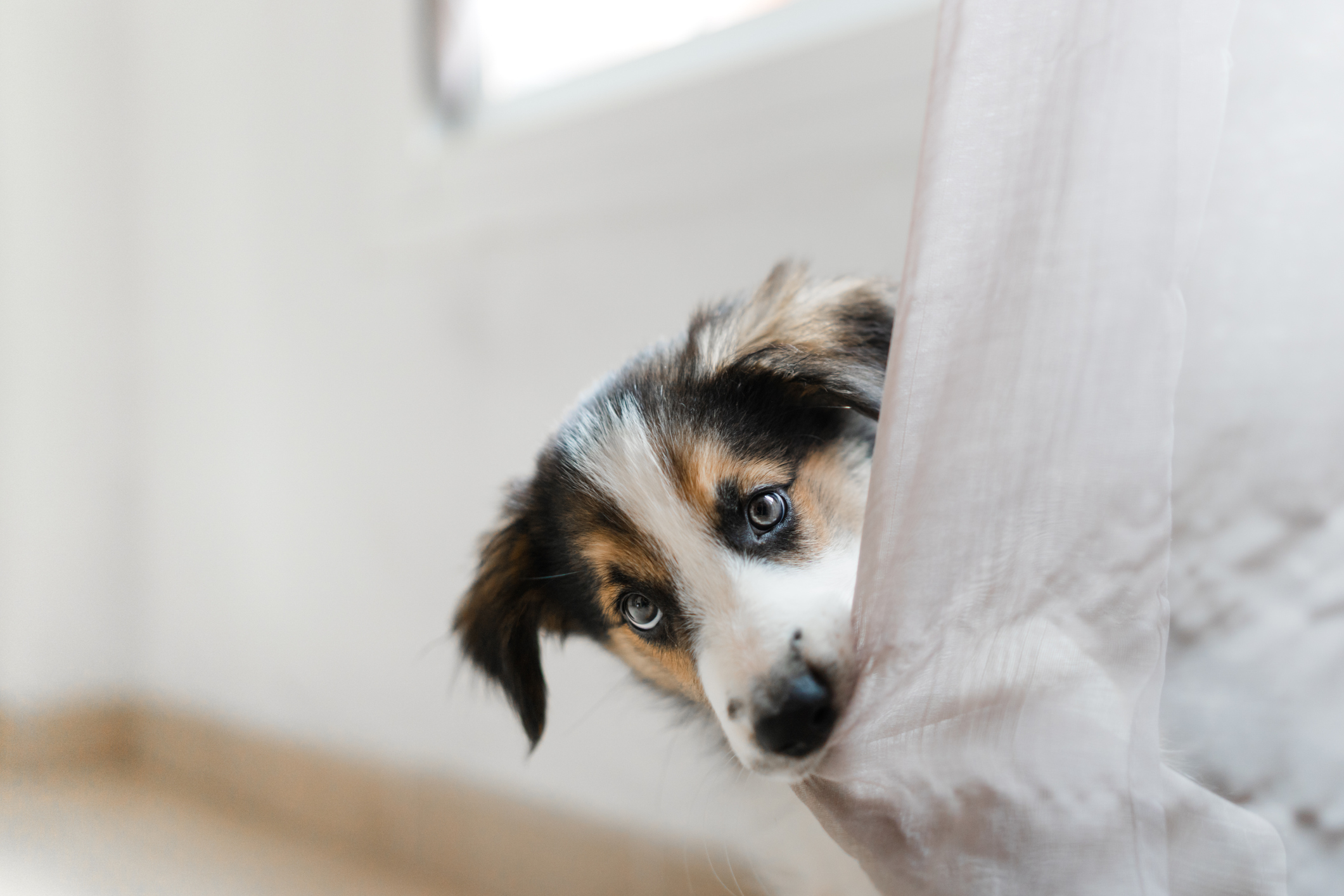How to stop a puppy biting when it gets excited
A dog that nips isn't youthful exuberance — it's also a sign that other things are going wrong in your training and relationship with your pet. Ben Randall explains.


A puppy who is biting might seem cute when they're still small enough to balance on your hand, but it's behaviour that can get out of hand and cause problems — something this week's reader has found out the hard way. We'll jump right in.
Dear BenI’ve got a question about my 16-week-old puppy, a cross between a labradoodle and a spaniel.She is jumping, biting and pulling on my bag on walks, especially walks to the park, or after meeting other dogs. If I remove the bag, she’ll try to bite my legs or my bum. It seems like she gets overwhelmed and overexcited very easily; if I lift her up and hold her against my body, or crouch down and hold or stroke her she calms down, but then usually starts again when I put her back down. After a couple of minutes she usually settles, and she'll respond to the 'sit' command if tempted with a treat. This doesn't really happen at home or on shorter walks around the block.She also gets extremely excited by other dogs, barking and running around in circles. I'm looking for some advice on how to best handle this situation and what could be causing it. Any advice would be greatly appreciated! — AE, via email
Over the last 15 years, honing my BG (Beggarbush) training and running our luxury boarding kennels, I've seen an at leat 30 dogs per day, every day. That's literally tens of thousands of dogs, so as you can imagine I've seen almost every behavioural problem and training technique.
This has been invaluable to me in my training, seeing various methods — and mistakes. And I'm afraid it sounds as if you've found yourself with the latter. My heart goes out to you: I have many clients come to me with severe scratches and bite marks on their arms, wrists, legs and ankles. It’s really upsetting to see; the dream of the dog they wanted has unfortunately turned in to extremely overexcited, possessive, spoilt child behaviour.
That's the bad news. The good news is that in 99.9% of cases, it's easily diagnosed, and straightforward to fix. It's almost always something which happens with dogs which have been bribery-trained, often as not through an inexperienced trainer running a 6-week course at the local village hall or similar. Your mention of the dog responding to the 'sit' command when offered a treat makes me feel like that is the underlying issue here.
It's an easy trap to fall into. The dog does something naughty, like nipping you; you tell it off, it sits back down, and you give it a treat for doing so. But instead of teaching the dog to stop the behaviour, you've just taught the dog that to get a treat all it has to do is nip you, then sit back down.
Here's what you need to know about what is happening, and how to stop it.

1. Remember that you're playing the role of mother to your puppy — and that's not just about treats
As it happens I have three cocker spaniel puppies being trained at the moment. Each is trained individually, and only this morning I had the puppy in the yard with her mother, Molly, who was going to the toilet. The puppy jumped on Molly and pulled her ears as she was doing her business; Molly tolerated it for a few moments, but then shut the puppy down instantly with a proper growl and a nudge.
Exquisite houses, the beauty of Nature, and how to get the most from your life, straight to your inbox.
It was amazing: the puppy stopped immediately, getting the message, and didn’t do it again. It wasn't scared or upset either, it just submissively snuggled up and nudged into Molly, which was fine with her – just as it would be with you. Loving, calm and submissive is the opposite of jumping, biting and ragging.
Many of my methods have been devised watching just this sort of behaviour. I class myself as the mother of the pack, someone they look up to, trust, and have a great bond and partnership with. That means love and affection, of course, but also keeping them in line. One minute the mother can tell a puppy off, then next they can be snuggled up together again.
2. Instil the key puppy training commands
It's your puppy, and you can spend as much time as you want going back to sound basics with your training.
I've mentioned many times before the importance of the ‘leave’ command — you must teach it from day one (apart from anything it's vital to keep your dog safe from household dangers), and keep on practising it whenever there is an opportunity. Follow the link for step-by-step tips on how to do it; and also take a look at my pieces on getting a dog to sit (without bribery), walking to heel, and recall.
It won't happen overnight, but remember that this is your puppy, and that you have as much time as you need to work on it. And trust me: repetition and consistency always work. Get all these right and you'll build not just obedience, but the trust and mutual respect that every mother wants from their children — or would want!
3. Tone and timing are crucial — and the hand trick can help
Molly was able to correct her daughter's behaviour with a meaningful growl at the right moment — and take a lesson from her. The timing, tone and volume of your command is very important.
There's another tip that can help too. When used alongside the ‘leave’ command, you can really correct a dog's bad behaviour quickly by covering their eyes with your hand. Do so as you give the command and it's surprisingly powerful tool — but please note that some dogs see will this as more play, and it can make the problem worse. Teaching this technique — I call it my BG correction — with a younger dog gives you a powerful tool. We'll talk more about this next week.
If they are happy with it, here's how to do it. Stand up in a situation where you sense you're about to have the problem again, and as the dog comes to jump at you and nip, get ready as you're about to use their naughtiness as a training opportunity.
Just as the dog goes in to commit the crime, give the leave command in a much, much louder and more assertive tone than normal — and as you do so, lean down towards the dog and cover its eyes with your hand. Doing this even half a dozen times is probably enough — this usually works very, very quickly. Keep the training up even when the nipping stops though, using the ‘leave’ command, without the hand, to help your dog understand this means no touching, grabbing, biting, chewing etc.
All this will come together to leave you with a dog who is calmer and more submissive. And next time he comes up to you, he'll more than likely put his head in your hands for a snuggle and a cuddle — just like Molly and her puppy.
For more detailed advice about Ben Randall’s positive, reward-based and proven BG training methods, one-to-one training sessions, residential training or five-star dog-boarding at his BGHQ in Herefordshire, telephone 01531 670960 or visit www.ledburylodgekennels.co.uk. For a free seven-day trial of the Gundog app, which costs £24.99 a month or £249.99 a year, visit www.gundog.app/trial
